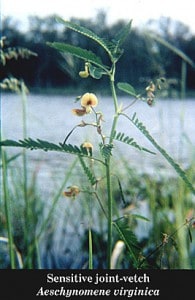Share this article
Geese Management Protects Sensitive Vegetation in N.J.
The Maurice River and tributaries in Cumberland County, New Jersey represent an important tidal freshwater habitat for critical emergent vegetation and migrating birds. This vegetation — including wild rice (Zizania aquatica) and federally listed sensitive joint-vetch (Aeschynomene virginica) — provides essential habitat and nutrition for migrating waterfowl and other species. Declining wild rice abundance in the 1990s prompted action to identify the cause and address the loss of vegetation.
An integrated wildlife damage management program has alleviated damage, determined through exclosure plots to have been caused by grazing geese.
Resident geese comprised 20% of the total Canada goose population in 1970 compared to 41% in 1990. National resident Canada geese populations increased about 12.7% annually in the 1990s. As year-round populations in the area increased, acres of wild rice were decimated and marshes were becoming bare as grazing geese pulled vegetation entirely from the soft substrate.
Led by the New Jersey Division of Fish and Wildlife (NJDFW), with USDA Wildlife Services (WS) assistance, the project focused on decreasing nesting success, and harassing and removing local resident geese. From 2001 to 2010, the number of geese has declined and the number of nests dropped 70%. Simultaneously, the time invested also declined but the success of vegetation improved.
Initial concerns that the integrated program might impact the area’s state-threatened osprey appeared to be unwarranted; osprey nesting doubled during the period and fledging remained similar.
The cooperative effort to protect the imperiled marsh included Partners for Wildlife, The Natural Lands Trust, Citizens United to Protect the Maurice River and The Nature Conservancy. This cooperative effort is a great example of groups with multiple, varying interests using common ground to accomplish the shared goal of wetland conservation.
For more information on resident Canada geese management techniques read two articles from the Wildlife Society Bulletin, available here and here.
Wildlife Services is a Strategic Partner of TWS.
Header Image: Image Credit: USDA Wildlife Services










